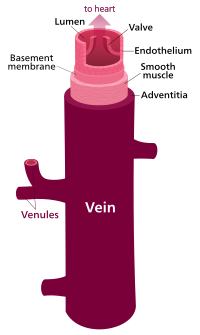
Single sample preparation for brominated flame retardants in fish and shellfish with dual detection: GC-MS/MS (PBDEs) and LC-MS/MS (HBCDs)
Sign Up to like & getrecommendations! Published in 2019 at "Analytical and Bioanalytical Chemistry"
DOI: 10.1007/s00216-019-02250-x
Abstract: An analytical method for the simultaneous determination of polybrominated diphenyl ethers (PBDEs) and hexabromocyclododecanes (HBCDs) in fish, shellfish and muscle of terrestrial animals was developed as an extension of a previously validated method for PBDE… read more here.
Keywords: pbdes hbcds; sample preparation; single sample; fish shellfish ... See more keywords

Smoke suppression of graphene platelets fabricated by Friedel–Crafts reaction in brominated flame-retarded PS
Sign Up to like & getrecommendations! Published in 2017 at "Journal of Thermal Analysis and Calorimetry"
DOI: 10.1007/s10973-017-6093-y
Abstract: Graphene nanoplatelets (GNPs) were introduced into polystyrene (PS)/brominated polystyrene (BPS) blends to suppress the large amounts of smoke generated from brominated flame retardants during combustion. A Lewis acid catalyst (AlCl3) was added to initiate Friedel–Crafts… read more here.
Keywords: friedel crafts; gnps; crafts reaction; fabricated friedel ... See more keywords

Trends in bond dissociation energies of brominated flame retardants from density functional theory
Sign Up to like & getrecommendations! Published in 2018 at "Structural Chemistry"
DOI: 10.1007/s11224-018-1078-4
Abstract: Bond dissociation enthalpies (BDEs) are computed using the Density Functional Theory (DFT) for a selected set of C–Br, C–O, and C–Br bonds susceptible to homolysis in the thermal degradation of four brominated flame retardants (BFRs):… read more here.
Keywords: density functional; bond dissociation; functional theory; flame retardants ... See more keywords

Currently used organophosphate and brominated flame retardants in the environment of China and other developing countries (2000–2016)
Sign Up to like & getrecommendations! Published in 2017 at "Environmental Science and Pollution Research"
DOI: 10.1007/s11356-017-9336-3
Abstract: This review summarizes the environmental occurrence of new brominated flame retardants (NBFRs) and organophosphate compounds (OPs) in the environment of developing countries since 2000. The ban on the production and use of commercial formulations of… read more here.
Keywords: research; currently used; developing countries; environment ... See more keywords

Serum levels of brominated flame retardants (BFRs: PBDE, HBCD) and influence of dietary factors in a population-based study on Swedish adults.
Sign Up to like & getrecommendations! Published in 2017 at "Chemosphere"
DOI: 10.1016/j.chemosphere.2016.10.008
Abstract: The aim of this study was to investigate associations between serum concentrations of brominated flame retardants and personal characteristics, including diet, in adults participating in a population-based study in Sweden 2010-11. Moreover, observed concentrations were… read more here.
Keywords: hbcd; population based; study; serum ... See more keywords

Simultaneous analysis of historical, emerging and novel brominated flame retardants in food and feed using a common extraction and purification method.
Sign Up to like & getrecommendations! Published in 2018 at "Chemosphere"
DOI: 10.1016/j.chemosphere.2018.04.070
Abstract: Brominated Flame Retardants (BFRs) are still widely used for industrial purposes. These contaminants may enter the food chain where they mainly occur in food of animal origin. The aim of our work was to provide… read more here.
Keywords: method; tbbpa; food; flame retardants ... See more keywords

Occurence of legacy and novel brominated flame retardants in food and feed in France for the period 2014 to 2016.
Sign Up to like & getrecommendations! Published in 2018 at "Chemosphere"
DOI: 10.1016/j.chemosphere.2018.05.122
Abstract: Determination of the occurrence levels of legacy and novel BFRs is today required to better understand the trends of BFRs contamination in food consecutive to the EU PBDEs restrictions and to proceed to a recent… read more here.
Keywords: 2014 2016; food feed; legacy novel; food ... See more keywords

Photodegradation of the novel brominated flame retardant 2,4,6-Tris-(2,4,6-tribromophenoxy)-1,3,5-triazine in solvent system: Kinetics, photolysis products and pathway.
Sign Up to like & getrecommendations! Published in 2019 at "Chemosphere"
DOI: 10.1016/j.chemosphere.2019.04.184
Abstract: In this study the direct and indirect photolysis of the novel brominated flame retardant 2,4,6-Tris-(2,4,6-tribromophenoxy)-1,3,5-triazine (TTBP-TAZ) in an organic solvent mixture (60:30:10, ACN:MeOH:THF) under UV-(C) and simulated sunlight irradiation was investigated, and the formed photo-transformation… read more here.
Keywords: photolysis; irradiation; ttbp taz; novel brominated ... See more keywords

Effects of novel brominated flame retardants and metabolites on cytotoxicity in human umbilical vein endothelial cells.
Sign Up to like & getrecommendations! Published in 2020 at "Chemosphere"
DOI: 10.1016/j.chemosphere.2020.126653
Abstract: Novel brominated flame retardants (NBFRs) have been widely used and frequently detected in various environmental matrices. In this study, 2-ethylhexyl-2,3,4,5-tetrabromobenzoate (TBB), bis-(2-ethylhexyl) tetrabromophthalate (TBPH) and their metabolites (namely 2,3,4,5-tetra-bromo benzoic acid (TBBA) and mono(2-ethylhexyl) tetrabromophthalate… read more here.
Keywords: vein endothelial; human umbilical; umbilical vein; novel brominated ... See more keywords

Deriving freshwater safety thresholds for hexabromocyclododecane and comparison of toxicity of brominated flame retardants.
Sign Up to like & getrecommendations! Published in 2017 at "Ecotoxicology and environmental safety"
DOI: 10.1016/j.ecoenv.2017.01.005
Abstract: Hexabromocyclododecane (HBCD) is a brominated flame retardant used throughout the world. It has been detected in various environmental media and has been shown toxic to aquatic life. The toxic effects of HBCD to aquatic organisms… read more here.
Keywords: deriving freshwater; flame retardants; safety; toxicity ... See more keywords

In vitro effects of brominated flame retardants, selected metals and their mixtures on ethoxyresorufin-O-deethylase activity in Mossambica tilapia liver.
Sign Up to like & getrecommendations! Published in 2018 at "Ecotoxicology and environmental safety"
DOI: 10.1016/j.ecoenv.2018.05.084
Abstract: The in vitro effects of individual brominated flame retardants (BFRs), selected metals, and their binary mixtures on ethoxyresorufin-O-deethylase (EROD) activity were evaluated using a plate-reader method. The BFRs, 2,2',4,4'-tetrabromodiphenyl ether (BDE-47), decabromodiphenyl oxide (BDE-209), hexabromocyclododecane… read more here.
Keywords: vitro effects; activity; mixtures ethoxyresorufin; flame retardants ... See more keywords